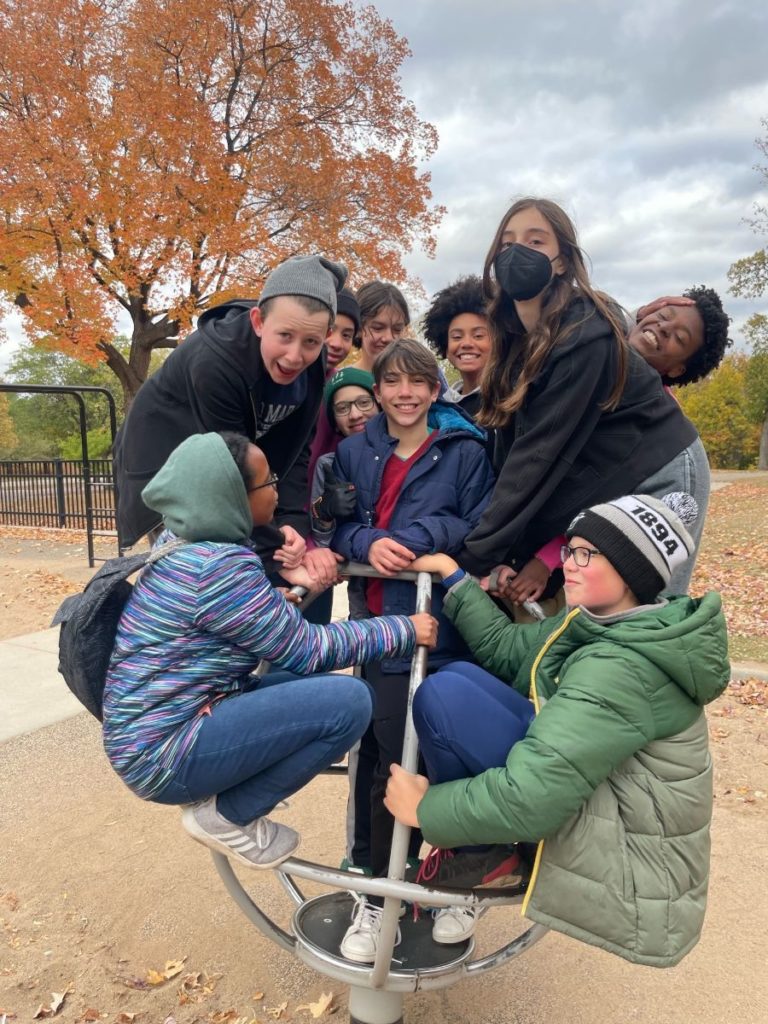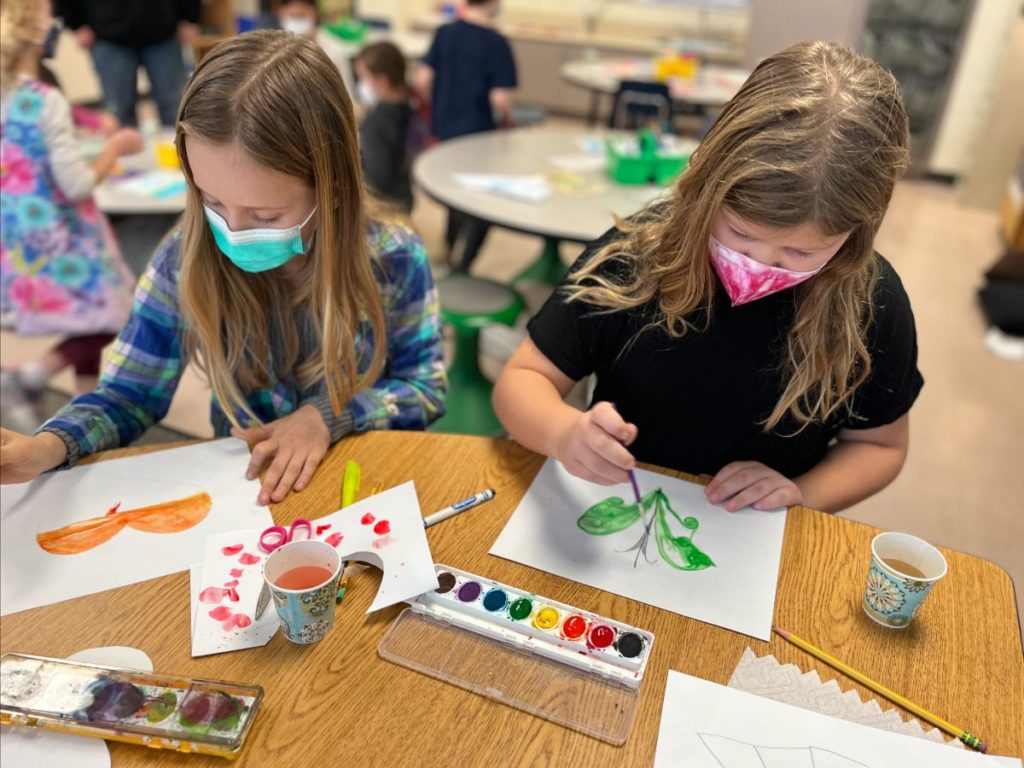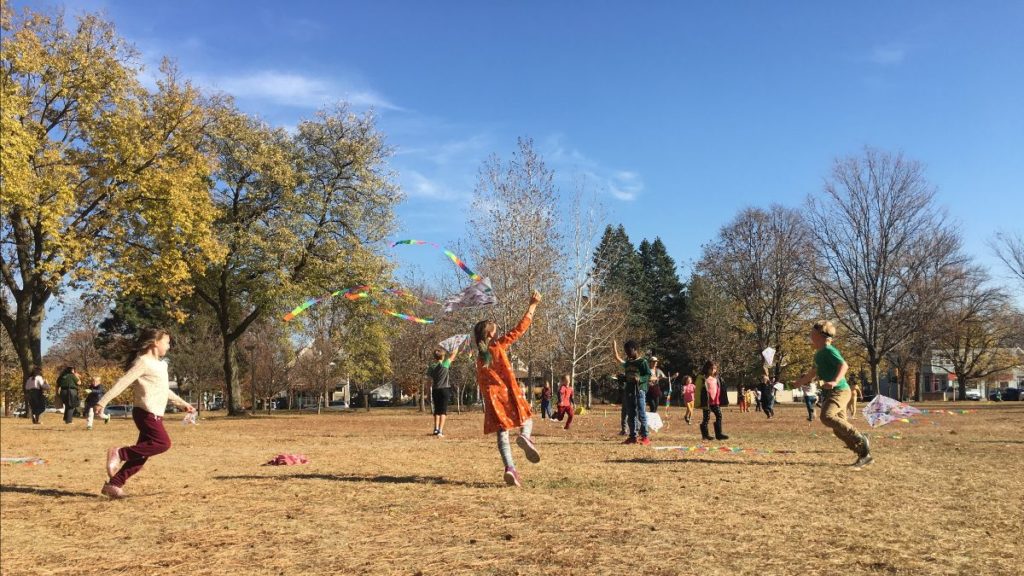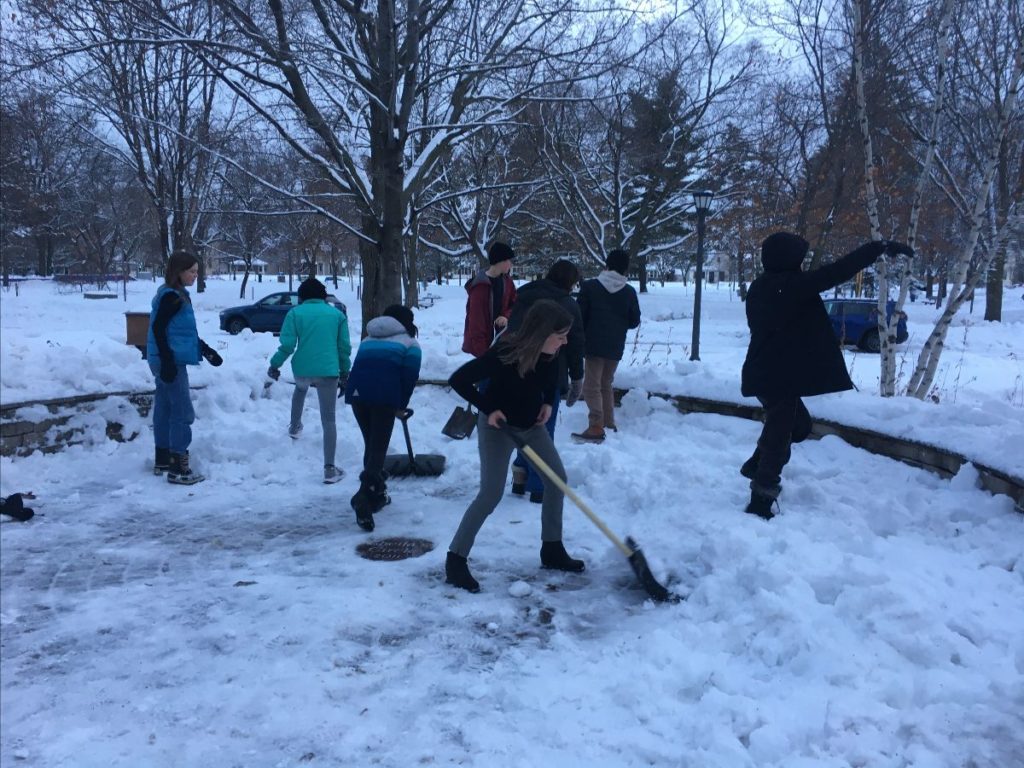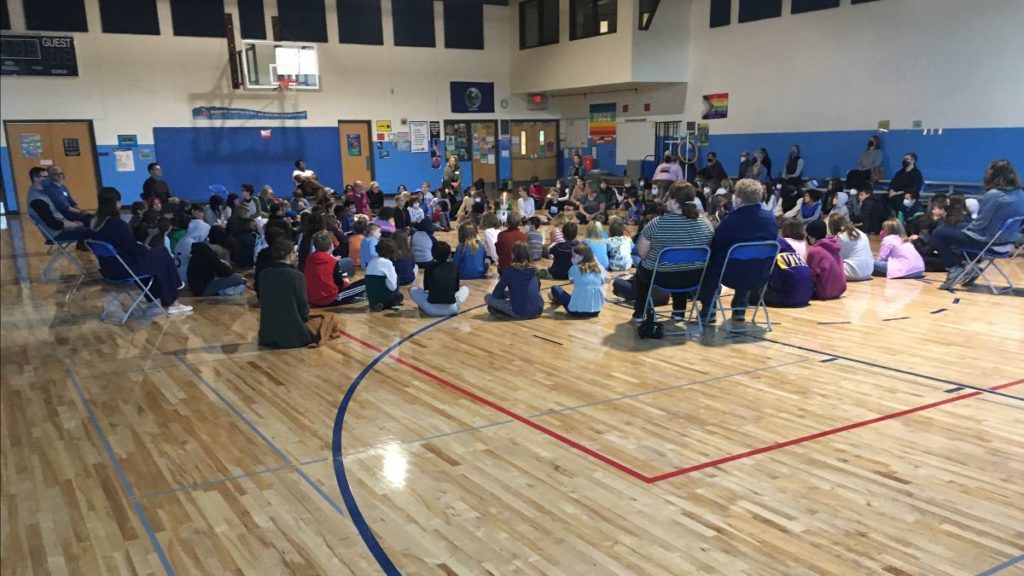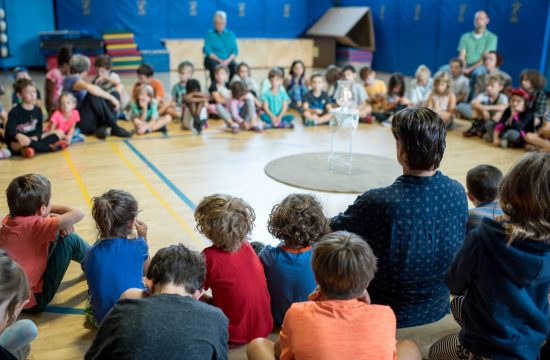We know that some students are at their happiest sitting quietly and reading a book but might need to be challenged to find the joy in moving their bodies. We know some students just can’t stop moving, their challenge might be sitting quietly and listening to a teacher or another student. Neither student is “right” or “wrong.” Neither way of being is “right” or “wrong.” Both students have ways of being that are the most comfortable to them. Both students are important parts of our community. And both have room to grow and learn as they navigate the different ways we share space and move at school.
Meeting for worship is a time when we come together as a community to sit in silence and reflect. It is a time when we are striving for stillness in our bodies. There has never been and will never be a meeting for worship where you can’t hear someone fidget or cough or drop something. Perfect silence isn’t the point. The goal is to experience stillness and all it offers, even if just for a moment. The practice of striving for silence, keeping your body still, and being able to sit and share the silence are skills we develop over time.
Beginning in Kindergarten through middle school, we reflect with our students (using language and concepts appropriate for each age).
How does it feel to sit quietly?
What happens in your body when you do?
How does it feel to run and play?
How does it feel to move your body outside?
How does it affect our mood or our ability to learn at different times of the day?
How does it feel to run and play together and how can we make sure we are respecting everyone’s boundaries?
We reflect with our students and challenge them because we know it will help them grow. We know life beyond Friends School will require them to behave in ways that might not be their preference. We also know that finding stillness and also making time to move our bodies helps us all be the most awesome version of ourselves. This is what we want for our students as they grow, build a sense of self, and ultimately graduate from Friends School.Â
Reflecting Together
Rough-and-Tumble Play
Shana’s grade 1/2 class has been reflecting on rough-and-tumble play and what it looks and feels like. Rough-and-tumble play helps children learn the importance of consent, how to set boundaries, communicate with each other, and how to read non-verbal communication.
They reflected on what some of the parameters should be. They came up with:
- Only play with another person who wants to play
- Stop when someone says stop
- Begin working on recognizing when you feel you might be about to “cross the line” and stop at that point
- Listen to the adults in the area who might see something you do not
- Make sure you are on a surface that is a little soft*
Will conflicts arise during rough-and-tumble play? Yes, absolutely. Will everyone remember these parameters? No, they will not, but again perfection isn’t the point. Being in community is and that means teachers will help students build skills to navigate conflicts. They will help students reflect on their own perspective and other people’s perspectives, and they will help students grow.
*They recently revisited this conversation. The snow has turned from “a little soft” to icy and hard in many spots. They have decided to not have rough-and-tumble play for a little while until there is soft snow or grass again.Â
